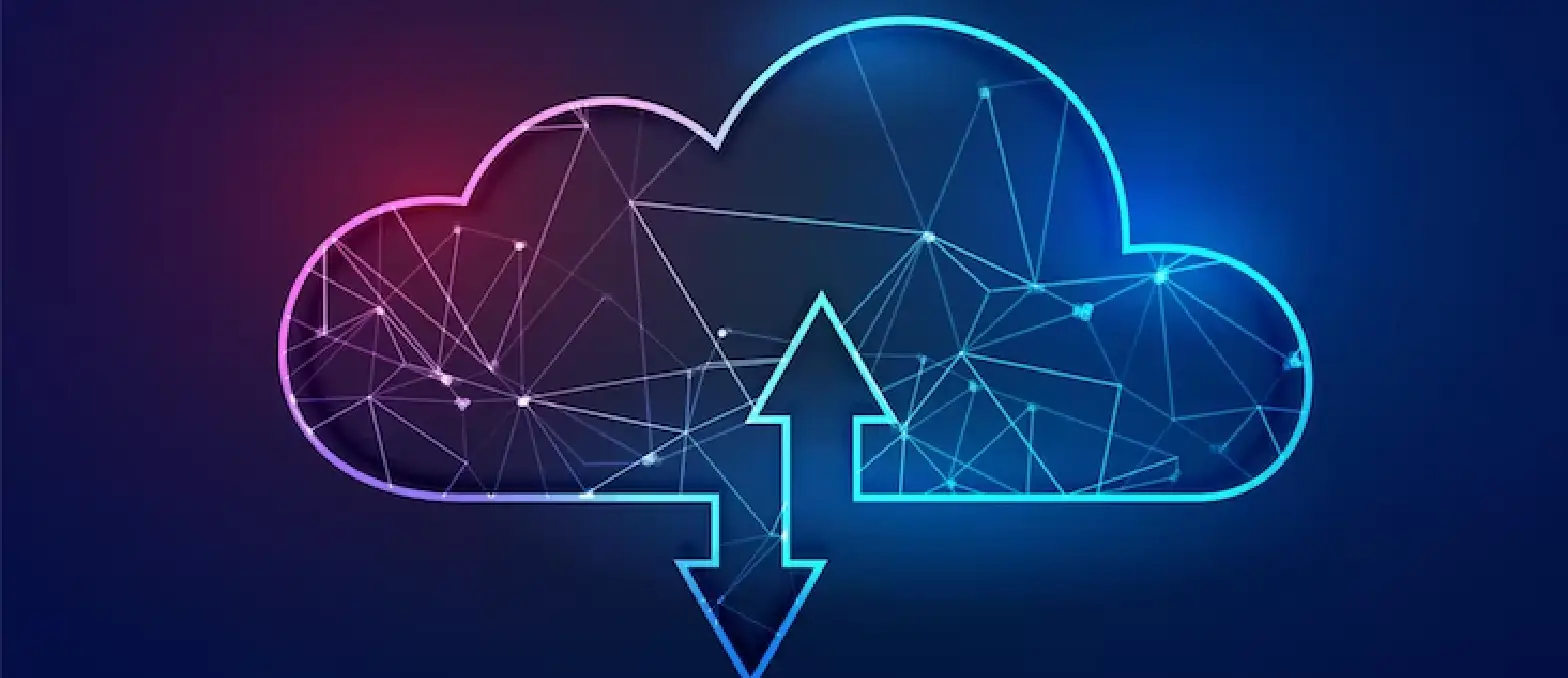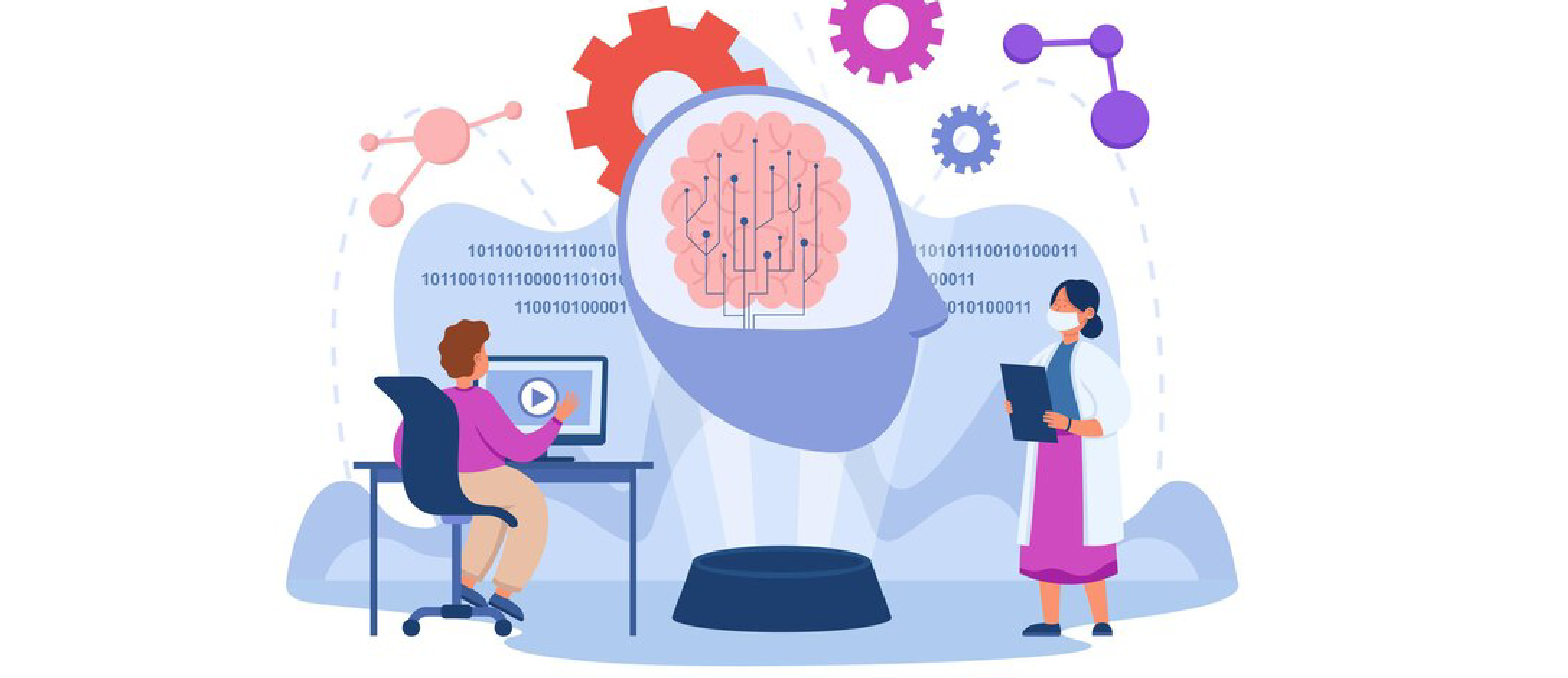Artificial Intelligence (AI) is a key component of technology today. After all, Adam Uzialko writes for Business News Daily that its power is transformative. Specifically, “Artificial intelligence has a wide range of uses in businesses, including streamlining job processes and aggregating business data.” The bottom line is that AI is part of all technology now.
Therefore it is important for us to understand how this in key business technology. In this blog, we will explore the role of AI technology in Employee Benefits Administration software. Furthermore, this will be an explainer of AI in business software and in employee benefits administration in particular.
Understanding AI as a technology in software including employee benefits administration
To begin with, let us look at a brief history of AI as a technology. Presently this global market is a dominant economic and innovative force. Accordingly, Grand View Research reports that as of 2022 the international AI market worth is nearly $140 billion USD. To clarify, PR Newswire specifies that, “For instance, from self-driving vehicles to crucial life-saving medical gear, AI is being infused virtually into every apparatus and program.”
AI’s inception is traceable to the mid-20th century. Firstly, Alan Turing, a leading British mathematician, introduces the Turing Test in the 1950s to determine computer intelligence. In the decades following, computers and IT develop leading AI including deep neural networks. Recently, the November 2022 release of OpenAI’s ChatGPT marks another milestone in AI capabilities.
To illustrate this further, it’s worth reviewing the leading AI capabilities
- Computing — Enables machines to mimic the human brain in logic, reasoning, accuracy, and efficiency. Altogether this results in more powerful tools and consistent user and operational results.
- Machine Learning — This requires direct human input for the algorithm to ‘learn’. In this case, the AI can learn through human inputs over time to respond and accumulate ‘knowledge’.
- Natural Language Processing (NLP) — Recognition of human language to simulate conversation and interactions. In effect this enables a conversational UX, automating analysis and data management, and designing solutions for user problems.
- Deep Learning — This consists of neural networks built via algorithms that can sustain input and output. Due to this, the algorithm ‘learns’ to create an interactive UX or deliver process fulfilment without direct human input.
- Robotics — Standalone robots are built using AI algorithms to operationally fulfil user needs. Correspondingly, human beings can use robots for tasks from manual labor to healthcare. At the present time, programming robots using AI enables humans to optimize operational tasks in a range of scenarios.
- Data Science — Programming AI uses mathematics and statistics in order to advance the AI capabilities. In detail, this leads to analysis, reasoning, solution design, strategy, and task management.
- Problem-Solving — Deeper use of problem-solving AI enables logic-based algorithms, data science and analysis, and abstract reasoning. Then the AI can offer a solution design or identify the key components contributing to the problem.
Simplify HR with Advanced Benefits Software
Why AI capabilities are essential in employee benefits administration and other software in 2023?
To that end we can then analyze and critically discuss how software engineers integrate these AI functionalities into programs. Whether for improving processes or supporting user interfaces (UI), AI is part of most of our software technology now. Both professional and consumer technology involves some kind of AI including predictive text, database report analysis, and health services. Overall, AI is now one and the same with the technology we use. Equally, it’s difficult to separate the two in this development era as we all expect an AI standard of UX.
The main AI capabilities that we use in software
- Analysis — To enable users, personnel, managers, and customers to receive key information and data organization. Furthermore this will help businesses derive essential reports and insights.
- Efficiency — To eliminate key obstacles to productivity as well as increasing effectiveness of tasks and operations. In general this improves workflow and hindrances to individuals and teams.
- Accuracy — To optimize the way operations happen and manage risk. In like fashion, this leads to fewer mistakes and can protect stakeholders along with profits.
- Streamlining — To enhance how people undertake tasks and the overall UI of every person who must use the software. Thereafter there is a greater opportunity for the macro flow of all aspects of an organization.
- Simplification — To eliminate non-essential complications while boosting the essential operational elements. By and large the paring back of distractions and strengthening of key elements supports organizational strategy.
- Problem Resolution — To assess situations and identify problems with data, mathematical and statistical, that then uses logic to establish courses of action. Balanced against time-consuming and even confusing resolution processes, this focuses on empirical insights to design and implement situations.
As a result of the scope and complexity of these AI capabilities there is also countless options for customization. Sooner or later, any organization that uses software should evaluate what they need and if their chosen platforms support this. As much as possible, organizations and managers are in a place where they can look to cutting-edge technology. At this time, this is software with AI features that support ergonomic outcomes.

How AI technology is part of employee benefits administration platforms
Likewise, AI is now a prominent part of employee benefits administration platforms. Because this is a specialist SaaS that requires accuracy and user-friendliness, AI is of fundamental value. Crucially AI in employee benefits administration platforms is not overtly apparent to the user and instead helps four key areas. That is to say these areas are:
- Data management and security
- UX/UI
- Employee benefits tailoring
- HR planning and employee support
To this end, AI in employee benefits administration has a leading role in how organizations eliminate wide-reaching problems. In particular, this achieves the outcome of freeing HR to focus on supporting team members while upholding compliance legislation. At the same time, employees are able to more simply and reliably understand and enrol in their entitlements. Unsurprisingly, an Eightfold AI survey found that on average 73.8 percent of HR leaders currently use AI in some way. Therefore AI has a role in HR now and beyond whether it’s helping with tasks, educating employees, or onboarding recruits.
The role of AI in this sort of employee benefits administration in 2023
Overall, some experts project that AI is going to be a completely revolutionary force in how HR departments work. To emphasize, we refer to an article from Nick Martindale for Employee Benefits from the UK who says the following about AI in 2023. “It [AI] is a trend that is expected to increase this year, offering greater personalisation of benefits for employees and providing employers with the information they need to shape strategies.”
Despite the reticence of some industries to invest in AI, every organization that uses employee benefits administration can reap rewards. Moreover AI functionalities deliver a tailor-made UX as they adapt to the individual user. For example, in the employee benefits space, AI can reference data about the single employee to make custom enrollment recommendation. Even if HR team members have this information, they can rarely deliver insights on-demand and direct to an employee.
To explain what this means in 2023, let’s look at how AI helps three major areas of ongoing organizational frustration:
- Security — Onsite and remote employees are all responsible for maintaining data security. To list the issues, we need to consider infrastructure, location risks, and user error. Undoubtedly, AI software features that protect all data, no matter where employees are, and that can flag issues are priceless. Unlike standard security frameworks, in-built AI can automatically help with running reports, prompting digital hygiene, and maintaining cybersecurity protocols.
- Compliance — Legal requirements and organizational policies are a HR responsibility. In reality, they are a right of employees and all other stakeholders, too. In the event that there are any issues or mistakes, AI can help in a number of ways. To list these, AI can prevent these through gatekeeping, remind HR to check their activities, and produce an audit trail. Additionally, AI can automatically keep forms and the UI up-to-date with compliance law to support the organization.
- Employee Engagement — Every organization struggles with caring for their employees at some point. Equally, employees can find it difficult to keep up with their roles. In that case, and especially in 2023, there is pressure on all sides to overcome the Quiet Quitting phenomenon. Thus management can provide software that improves their employees’ experience and aligns with their entitlements. Thereafter, employees have a tool they can rely on for their professional entitlements and health insurance that’s accessible every day.
How AI helps make employee benefits administration data management more secure and accurate
For the most part for every organization, the high-level requirement is that their systems help with data security. Notwithstanding a well-maintained cybersecurity policy and thorough staff education, robust in-built security is a non-negotiable. For this purpose, AI is an attractive and valuable feature as it integrates with cybersecurity and cultivates digital hygiene practices. Subsequently, data protection — both in compliance and in stakeholder care — is consistent. In time, this has a multi-dimensional impact for the organization’s reputation, the security of all individuals, and monitoring risks.
Most compelling evidence for secure data management in employee benefits administration links to:
- Infrastructure — Integrating AI technology in software structures directly enhances the security of systems. In short organizations can select software systems that will protect their users’ and stakeholders’ data as an innate structural feature.
- User activity — AI technology helps manage user activity and flags if their are any issues occurring. In order to do that, the AI can automatically record if users’ accounts are not particularly secure. Additionally the system can identify if data is vulnerable.
- System access — Software iterations with AI can make system access much more difficult. Ultimately this protects all stakeholders, including employees, and it can deter any criminals seeking to breach security. In particular, automating system access protocols with AI leads to strong credentials management, such as with high-level MFA.
- Audit trails — AI features helps with protecting all users and minimizing corrupt activities. Furthermore this can deter any forcing of access while recording if any employees, such as HR, make input errors. Also this helps managers and HR monitor and analyze access patterns to mitigate data breaches and identify employee account problems.
Basically AI is already in use across many software platforms and systems to level up system security and data management. All in all, these functionalities facilitate better cybersecurity and uphold prevention principles that encourage good digital hygiene practices among employees. Analogous to prevention being better than cure, organizations that opt for AI in their employee benefits software are working protectively. Owing to this as a cybersecurity principle, data management can improve the everyday environment and reduce long-term breach risks.
Examples of use of AI in employee benefits administration
Now that we have a review of the role of AI in employee benefits administration, we will provide use examples. In this situation, we will review three different areas of use that are currently happening in the global business market. Furthermore, we will outline what makes this use so valuable to the case study organizations for B2B.
1. Using AI for staff learning and training
EdApp is a company that focuses on staff training on the HR side. In summary, this platform helps organizations with onboarding new team members. Though it is not always an integration with the employee benefits administration, it does round out the HR services suite. To clarify, this means that organizations can use this tool to benefit their staff at any time — even offline. Seeing that this product uses smart features like automation in reports and training updates, HR can then monitor staff progress. Emphatically, this helps keep employees on track and help is available whenever they need.
2. Using AI for web and mobile UX
HR start-up Elevate uses AI in their employee platform to give individuals a slick, modern UX. Overall, users can gain insights with design-centric and easily navigable UI. Given these points, the disruptive company is understandably attracting interest for their intelligent design as a sought-after business solution. Moreover, the AI helps them offer a “smarter” employee benefits software product to customers. In time, this results in organizations being able to offer stakeholders a current, progressive product that delivers a quality UX.
3. Using AI for recruiting talent
TopKnack is a HR start-up currently using ChatGPT for their recruiting activities. According to the company founder, they utilize the analytical functions of the conversational AI to plan recruitment including finding talent. In the same way, this use of the ChatGPT tool helps the organization save time and work more efficiently. Overall, this helps them better manage their day-to-day tasks without compromising on work quality.
The day-to-day functionalities of AI in the employee user experience (UX) in employee benefits administration
Obviously there are so many ways HR teams and organizations can use AI-rich employee benefits administration. Being that, daily usage patterns are important to discuss. Comparatively to the high-level examples above of specific industry use, in this section we will outline everyday organizational use. All things considered, AI can be misunderstood as an impersonal technology feature when it largely impacts UX in organizational settings.
Four day-to-day functionalities of AI that employees engage with in employee benefits administration
- Recruiting and onboarding
- Understanding benefits and entitlements
- HR organization and team support
- Data systems and verification
1. Recruiting and onboarding
As shown above, HR team members are already using AI functionalities in their recruiting and onboarding activities. Whether it’s for processing applications or automating application responses, AI helps HR manage tasks and more accurately assess potential candidates. Due to uses like filtering candidate credentials, this frees HR to focus on thoroughly interviewing and recruiting. Overall it can improve the odds of finding the right candidates. On the other hand, this also benefits new employees in onboarding as they have strong systems from HR. Accordingly, onboarding in this period is highly comprehensive from introducing new team members to helping them adjust to organizational systems.
2. Understanding benefits and entitlements
Educating employees about their benefits and entitlements remunerations is a fundamental ethical and compliance responsibility. Both management and HR team members in organizations are accountable for employees successfully completing enrollment in their benefits. Also ensuring that is simple, accessible, and user-friendly ties to how employees perceive their employer. Altogether, this can make a difference in how they feel about their workplace. Because AI in these systems actually helps tailor the UX, employees can better understand what’s available to them streamlining enrollment. Besides this, employees can access information at any time to check their remuneration status and then, if needed, contact HR.
3. HR organization and team support
All team members can struggle with high volume tasks. Moreover this can lead to mistakes that affect stakeholders in the short-term and long-term. As an illustration, consider how stressful it is for a HR team member to complete compliance tasks during administration overload. Consequently, the option to use AI features that redistribute tasks and utilize automation options helps HR focus on important work. As much as this benefits HR who need to adhere to compliance, this also helps team members who need support. By and large, if HR is bemoaning tasks that they can outsource, this flows on to all other team members. By comparison, using AI is a smarter resource allocation and upholds the crucial HR tasks that matter.
4. Data systems and verification
Lastly, using AI in data systems and user verification ensures best practice system security is upheld. Balanced against mainstream and emerging cyberthreats, AI-rich systems help manage data and protect stakeholders. Additionally they protect organizations both in the day-to-day and from a brand standpoint. Following the introduction of AI in data systems and credentials management, there a range of ways that security monitoring happens. For example, daily reports and audit trails provide management a clear understanding of what is happening where. In view of rising remote work as well as growing organizations, this targets manageable risks and mitigates complex threats.

What the future holds for employee benefits administration software as AI evolves
Finally, let’s review five key areas that benefit employees and organizations. Undeniably it is worthwhile to flag any risks, both in best practice and ethics, that can affect stakeholders. Surely this is a responsibility of every organization — commercial, private, or government — everywhere. Nevertheless, we would be remiss not to close this article with reference to the five ways operations and experiences may improve with AI.
Five ways AI in employee benefits administration helps stakeholders
- Fairness — Looking after all employees without bias is always important. Furthermore, this is part of compliance in the 21st century. In truth, technology companies are always improving anti-bias and inclusion in AI systems. Unquestionably this carries over to business software systems.
- Business progress — Equipping businesses and organizations to grow is a goal of any software investment. Unlike some systems, employee benefits administration helps all stakeholders and can help achieve a range of goals. What’s more, with AI there is greater scope to support employee, protect the brand, and expand productivity.
- Improved employee experiences — All organizations are looking to retain quality team members. Up to the present time this means nurturing employee satisfaction. To this end, software that improves training, is personalizing their services experience, and consistently accessible is very attractive to stakeholders.
- Better wellbeing outcomes — Following on from employee experiences, this targets an enduring issue: stakeholder wellbeing. With attention to this factor of professional and personal life, there are extensive and numerous ways to care for stakeholders.
- Higher level of benefits literacy — Together with the previous two ways AI helps stakeholders, we also need to acknowledge literacy. To rephrase it, this helps not just stakeholders in the professional setting but stakeholders in the wider social setting. That is giving employees and other people in the organization’s community access to their entitlements including health insurance. Thereafter AI very specifically helps stakeholders and has a positive, compounding effect in ensuring they properly understand their benefits options.
It is important to note that team members may need help to understand AI in their employee benefits administration. As systems are becoming live, or there is planning for deployment, training staff is an urgent matter. Given that workplaces and technology change rapidly, it’s necessary to plan implementation so there is a positive UX immediately.
Conclusion
In conclusion, it is undoubtable to that AI will evolve in use in the months and the years ahead. According to Prarthana Ghosh at Spiceworks, “Benefits administration being a largely routine task-based process system, AI has managed to effectively foray into the function, and for the better.” While we cannot be entirely certain of the specific uses, many experts believe that it elevates all employee benefits administration. In fact, Gem Siocon writes for Business News Daily that AI is a useful tool for HR departments in particular. Siocon says, “AI tools are versatile and offer HR teams a number of applications, helping them complete many important functions in a faster, more thorough way than ever before.”
Frequently Asked Questions (FAQs)
What exactly is employee benefits administration?
Employee benefits administration is software-as-a-service (SaaS) that is scaleable and customizable according to organizational needs.
In summary, these platforms help with:
- Recruitment and onboarding
- Staff training
- Remuneration and entitlements management
- Health insurance and benefits enrollment
- Professional development
- HR tasks and responsibilities
- Organizational compliance
- Data management and security
Overall this software helps organizations from all different industries complete their essential work. Unlike some other business software, employee benefits administration platforms are in use for in-organization and employee-facing organizational activities.
Is employee benefits administration always a SaaS?
Employee benefits administration platforms are not always a SaaS. Accordingly there are in-house and outsourced benefits administration solutions. All in all an in-house solution won’t necessarily be a SaaS. Comparatively an outsourced solution is often a SaaS that organizations can customize and scale as they grow or change.
What AI technology should we choose for an employee benefits administration platform?
AI technology features are an essential part of modern employee benefits administration platforms. Consequently it is worthwhile to invest in a robust platform that can accurately and consistently manage a range of functions.
Key AI technology functions are:
- Automation
- Data management
- System security
- Personalization and customizing UX
- Report production and analysis
- Audit trails
- Compliance management
What is the cost of employee benefits administration software?
Costs for employee benefits administration software vary according to a range of factors.
Specially, the main contributors to costs are:
- Scale of use
- Type and range of platform features
- Number of employees
- Cybersecurity needs
Nevertheless, exact figures will depend on a custom solution that is purpose-built for the organization. Overall, it is best to consult with expert software developers at A3logics to establish needs and then proceed from there.




![17 Best Healthcare Software Companies in USA [2024]](https://www.a3logics.com/wp-content/uploads/2024/05/17-Best-Healthcare-Software-Companies-in-USA-2024.webp)


![10 Top Healthcare Learning Management System Vendors in USA [2024]](https://www.a3logics.com/wp-content/uploads/2024/05/10-Top-Healthcare-Learning-Management-System-Vendors-in-USA-2024.webp)




